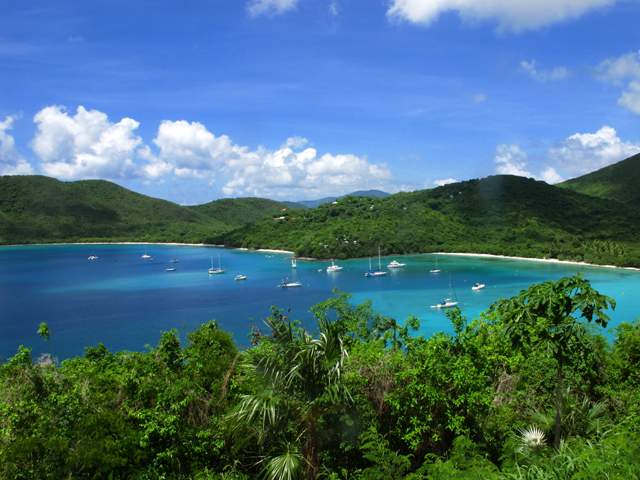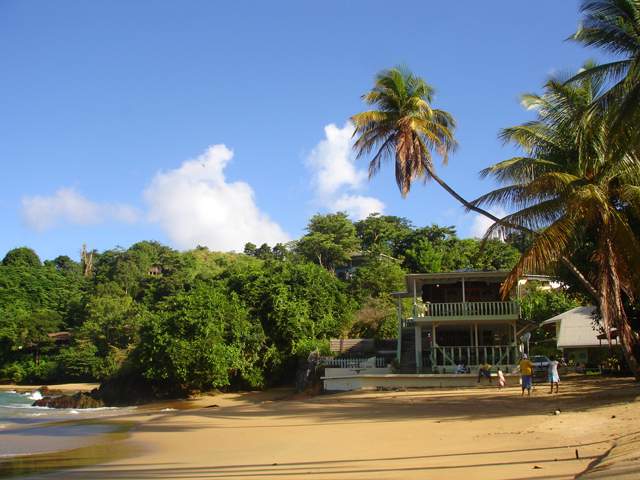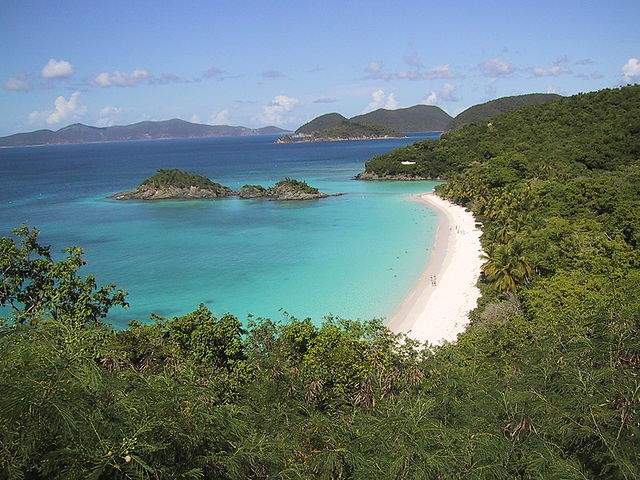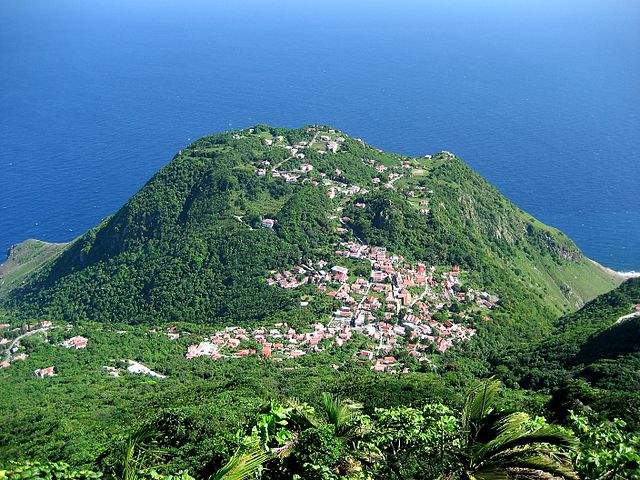The first thing that probably comes to mind when you imagine traveling in the Caribbean is a white sand beach with warm turquoise water and swaying palm trees. The second thing is probably an all-inclusive resort with expensive yachts and retired expats.
For independent travelers, the latter is mostly a deterrent for a beach vacation on a Caribbean island. Central America seemingly offers more culture, better value, and a more adventurous travel style for those seeking something other than a lounge chair and pina colada.
Though commonly considered the mainstay of a Caribbean vacation, all-inclusive hotels are only a part of the Caribbean experience. Just beyond the hotel gates are more than 7000 tropical islands waiting to be discovered by travelers with the time and energy to get out and explore.
Caribbean culture is extremely diverse as each island has its own unique flavor. The music you hear in Trinidad will be vibrantly different from that of Jamaica and Barbados. Caribbean cuisine varies throughout the region with many global influences represented in the markets and in the local dishes.
Experiencing Caribbean culture is how a beach vacation turns into travel.
With some small considerations and thoughtful planning, you can turn what you might think to be a standard Caribbean vacation into an adventurous taste of island life.
How to get away from all-inclusives

Island: The first, most important way to get away from the main tourist trail is to choose the right island. Some islands are hot spots for weekend travelers, celebrities, or the uber-rich, while others are more modest and may have a larger local population. (think St. Barths v. Curacao) Make sure to do some online research on the island you are considering to be sure that it isn’t mainly geared for a different type of traveler than what you are.
Accommodation: An offbeat place to stay is also an important consideration. Some hotels can immerse you in local culture while others keep you far away. Look for small guesthouses and eco-resorts as they often provide smaller facilities with a more personable staff. Sometimes the best options are located in areas slightly further away from the main ports, roads, and attractions.
Transport: Instead of booking chartered day tours to take you around the island and out on the water, try out the local ferries. Though you may not be spending a day hopping from beach to beach on a catamaran, ferries service most of the popular destinations and will get you there for far less cost. Remember, one of the best parts of traveling independently is discovering local transportation, so take this opportunity to travel as an islander and discover how locals get around.
Car rental: Renting a car, if within budget, is a great way to unplug from the crowds. Often there are secluded beaches, view points, and hiking trails that are only accessible via private transportation. Hiring a driver is generally not wallet-friendly in the Caribbean, whereas an airport car rental can save you bundles on cab fare while granting you transportation freedom. Car barges are sometimes available to take your car from island to island, where appropriate.
Know the local cruise schedule: Depending on how many cruise ships will dock on your island each day, the crowds will swell accordingly at the main attractions. Ship arrival schedules are generally available, so choose days with none or fewer cruises to head to the most popular locations.
Where to go
Tobago

Tobago, of Trinidad and Tobago, is a small island with plenty of quiet corners and empty beaches. It sits off the northwest coast of Trinidad, which itself is only 7 miles (11 km) from Venezuela. Getting from Trinidad to Tobago is cheap and easy on a 30-minute Caribbean Airlines flight from Port of Spain. Contrary to what you might think, the ferries here are generally not the best option as you’ll spend hours on the ride instead of the island.
Scarborough is the main town on Tobago, where the airport and most of the major resorts are located. Though most tourists end up staying close-by, there are beaches and villages all over the island which welcome travelers. Tobago is 26 miles (42 km) long, so a drive to the other side is not a time consuming affair.
Good idea: Head to Castara Bay. This small fishing village has only a handful of guesthouses and restaurants, making it feel like you’ve been dropped into local Tobagan life. Fisherman are up early every morning bringing in the day’s catch, which you’ll most likely be ordering up for dinner that night. There are also a few bars in town where you can pick up a couple of Stag beers and a rum drink while you “lime” away your evening with some local reggae.
Do: Aside from enjoying the Castara Bay beach, take the short hike out to the Castara Waterfall. If you aren’t into hiking, drive up the coast to hop from beach to beach. Don’t miss Englishman’s Bay – a wide and crystal clear beach with a few stands selling refreshments and souvenirs.
Stay: The Naturalist Beach Resort – This relaxed guesthouse is right on the beach and has plenty of options for large parties. Rooms start at $50USD in high season
Find a flight to Trinidad and Tobago
US Virgin Islands

Though typically frequented by serious boaters, divers, and Caribbean Cruisers, the US Virgin Islands still have a lot of untouched land and undiscovered beauty. Most of the tourist action is located on St Thomas, so logically there are more open spaces and more options for an independent traveler on St John. As the USVI is a US territory, the National Park Service has protected about 63% of St John, which has limited development overall. You’ll find that most of the island is green and untouched, and most of the beaches are free of hotels or resorts.
As the USVI is a US territory, the National Park Service has protected about 63% of St John, which has limited development overall.
Getting to St John from St Thomas is very easy – passenger ferries leave from both Charlotte-Amelie and Red Hook frequently, with car barges every 30 minutes from Red Hook. If you want to drive around St John (which is recommended), plan on taking the car barge as car rental costs are cheapest at the St Thomas Airport.
As the US Virgin Islands and the British Virgin Islands are in such close proximity to each other, you can hop on an international ferry and explore the pristine beaches on the British Islands. Tortola has the most frequent ferry service, with Virgin Gorda and Jost Van Dyke offering several ferries per week.
Good Idea: Instead of sticking around Cruz Bay (where the ferries dock on St John), head southeast over to Coral Bay. Goats and donkeys rule the roads down here where there are few hotels. The town is small and you’ll more likely to share space with locals here than on the north shore.
Do: Drive around the island to the various beaches and viewpoints. Don’t miss Trunk Bay, Salt Pond Bay, and Hansen’s Bay. All are beautiful Caribbean white sandy beaches with distinctly different quirks. Some beaches have excellent off-beach snorkeling and you’ll want gear at the ready – renting equipment for your whole trip is a good idea.
Stay: There are two great eco-resorts on St John. Maho Bay Camps is on the north shore of the island and offers fairly priced basic tents (starting at $80 in high season). Concordia Eco Resorts sits on a hill above Salt Pond Bay, and for a little more money, it offers a little more upscale tent options as well as enclosed rooms and small apartments (starting at $110 in high season).
Find a flight to the US Virgin Islands and read How to Tell Which US Virgin Island is for You?
San Juan, Puerto Rico

San Juan, the capital of Puerto Rico, is a center for travel, art, cuisine, and business. Though Puerto Rico is a large island with plenty to offer, the beaches and sights right around the city won’t let you down as far as culture and Caribbean beauty go. The coastline has fine golden sand and deep turquoise sea, regardless of which area you spend your time. Only a few hours away is the edge of the rainforest, El Yunque, as well as the beachy islands of Culebra and Vieques. With old San Juan’s colorfully painted colonial buildings and the ruinous fort El Morro, there is plenty of history here to enchant you.
While Isla Verde is the hub for luxurious large beach resorts and tall apartment complexes, Condado has some guesthouses and smaller apartments to offer. If you want to stay near the beach, this is a good home base. The nearby area Santurce also has some smaller hotel options without the beach but sometimes a lower price tag. It does, however, offer a lot in the way of edgy restaurants and art galleries.
Good Idea: Old San Juan isn’t only for tourists – at night time, there are many local restaurants and salsa clubs that will give you the real Puerto Rican nightlife experience. Take advantage of the public bus to get to old town – it’s only $0.75 per ride!
Do: Make sure to hit the Isla Verde beach. On the strip of beach furthest away from the resorts, you can join groups of other independent travelers and locals on the sand. Merchants sell waters and other cold drinks for only a dollar or two on hot days.
Stay: El Canario Inn in Condado is a small hotel with a guesthouse feel right in the middle of town. Though it’s just down the road from some of the bigger resorts of Condado, once inside it feels like an oasis of island life (doubles start at $119 in high season).
Find a flight to San Juan and check out our San Juan Indie Travel Guide
Saba

Just off the coast of the popular island of St Maarten, Saba is a Caribbean destination that offers island adventures off the beaten path. It is the smallest of the Netherlands Antilles and is known as a premier diving and eco-tourism location. This volcanic island has dramatic views, serious hiking trails, and only one beach. Perhaps it is for this reason that tourist facilities are spare and the local island vibe is undisturbed.
Getting here is fairly easy from St Maarten. Both flying and taking the ferry are easy options and can be similarly priced depending on the time of year. Check the schedules and weather before choosing the ferry as the 45 minute trip, leaving only once a day on weekdays, can get bumpy. Once you arrive on the island, you’ll want to take advantage of local taxis as the roads are difficult and driving could be stressful. The rates are standardized though, so you shouldn’t worry about being over charged when traveling between the two main towns – Windwardside and The Bottom.
Good Idea: Most people who come to Saba spend their time diving in the Saba Marine Park. These reefs are protected by Dutch groups aiming to diminish human impact on local marine ecology. Famous dive spots such as The Pinnacles, Ladder Bay, and Tent Bay – they should all be on your list to explore if diving is your thing. Back on land, check out the island’s black sand beach at Well’s Bay or head into the hills to hike around the island’s jungles, caves, and high peaks.
Do: Saba has the highest point of elevation in the entire Kingdom of the Netherlands, so don’t miss the view. Get there early as the peak fogs over by mid-day.
Stay: If you are looking for an adventurous place to stay rather than a hotel right in town, try out Saba’s eco-resort, The Rainforest Ecolodge, perched in the middle of the island (doubles start at $95 in peak season).
Find a flight to Saba and read 5 Shoulder Seasons Around the World
Photo credits: Ben Whitney, Ricymar Fine Art Photography, Radioflux, all others courtesy of the author and may not be used without permission.
